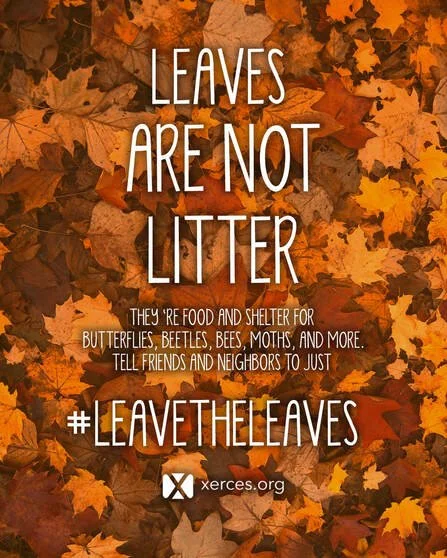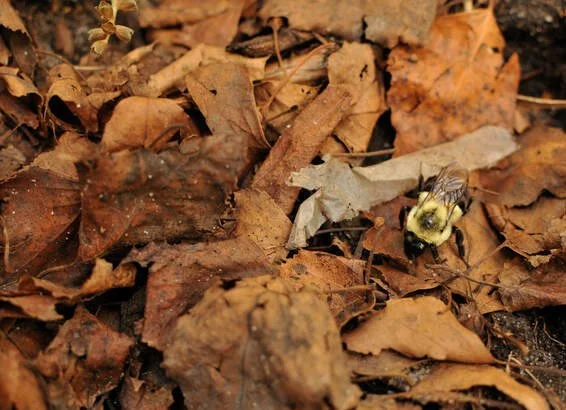Leave the Leaves... For Pollinators
For many, a leaf-strewn yard is a nuisance, a mess to be cleaned up and hauled away. Leaves are seen as a detriment to the idyllic American lawn. If you’re an organic gardener, you may look at fall leaves in a different light—you might see free, nutrient-rich mulch, and a perfect carbon source to accompany the nitrogenous kitchen scraps in your compost pile. If you’re an entomologist or a pollinator advocate, fall leaves look like something different entirely. Let’s take a look at how ‘leaving the leaves’ can support pollinators.
If you’ve ever strolled through a deciduous forest in the colder months you’ve probably noticed that, unlike the average lawn, no one rakes up the leaves. Instead, these fallen former solar panels accumulate on the forest floor and persist for many months to come. The leaves not only reintroduce carbon and other nutrients into the soil as they decompose, they also harbor their own little living world. For the smaller critters of the forest, the layer of leaves, also known as duff, can provide shelter from the elements, much-needed microclimates, camouflage, and even a crunchy, carbon-rich snack.
The majority of butterfly and moth species in temperate climates seek refuge among fallen leaves during the winter months, capitalizing on the many benefits previously mentioned. Different species of Lepidoptera (butterflies and moths) can be found overwintering in any one of the four distinct life stages these creatures occupy: egg, caterpillar, pupa, or adult. Take the red-banded hairstreak, for example—these delicate beauties lay their eggs on the underside of fallen oak leaves. When the caterpillars emerge they munch on these leaves to their hearts’ content and gear up for a harsh winter made livable thanks to their detritus home.
Lepidopterans are not the only pollinators that appreciate a leafy winter abode. Bumblebee queens burrow into the ground and rely on a layer of duff above them to keep out the elements. Unlike honeybees, these bumblebee queens will be the sole survivors of their colony, and the existence of next year’s colony is entirely dependent on her ability to make it through the winter. Seems an awful shame to rip the royal roof off of a queen’s house only to be tossed in a bag and hauled away.
Spiders, worms, nematodes, snails, and other invertebrates also occupy this under-appreciated microcosm. However, the role of fallen leaves extends even further. Leaf litter provides a crucial food source for birds that need larvae to feed their young. Even herbaceous perennial plants, waiting out the winter underground, benefit from the insulation the leaves provide their root systems. Like any other facet of an ecosystem, when the leaves are taken away, the effects radiate outwards impacting far more than just the critters that call them home.
Considering that pollinators are responsible for one in three bites of food we eat and pollinate nearly 90% of flowering plants, we need to do everything we can to protect them—leaving some leaf litter is an integral part of that process. So next time you feel inclined to get rid of those ‘pesky’ leaves, think about the butterflies, the moths, the bumblebees, and everything they do for us.
This article is written for the residents of the City of Asheville in partnership with the City of Asheville.



